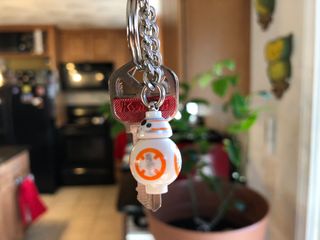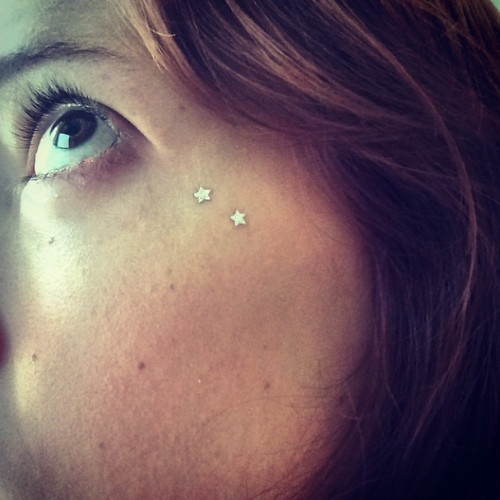Don't lock yourself out of your smart home: Always carry a key

Two days after I installed my latest smart lock experiment, I jokingly said to my husband "We're going to be in trouble if our internet goes down. I don't know where the key is to this lock anymore."
"Worst case, we'll get our parkour on and break a window," he responded.
As I sit at my kitchen table writing this story after having to crawl through said window, I find his reply far less funny.
I'd like the moral of the story I'm about to tell you to be "Don't joke about things you don't want to happen." In reality, it is this: Your smart home devices can fail or make mistakes, and when they do, you better have an alternative.
Reliance on the web — and power
Most electronics these days have backups: We make backups of our computers and phones. The internet goes down, and we have cellular towers to fall back on. The power goes out? We have generators, batteries, and other options to keep us fed, warm, and lit.
It's just common sense to have the same sort of backups for your smart devices. They're reliant on both the internet and power sources to work properly; without one or both, you'll need alternatives to either control them — or get around them entirely.
Philips Hue is an example of a smart home system that degrades well: When the company's lighting products are on and connected to their Internet-enabled bridge, they can be controlled from an app, Siri, Alexa, and Google Assistant. If the internet goes down, they can still be controlled by the switch of their parent light.
Master your iPhone in minutes
iMore offers spot-on advice and guidance from our team of experts, with decades of Apple device experience to lean on. Learn more with iMore!
Same with Nest's thermostat: Even if the internet goes down, Nest is still hard-wired into your wall so that you can adjust the temperature manually.
In theory, the same goes for smart locks: Most of them attach to the rear of a deadbolt, so your original key stays intact; should the lock's smarts fail for any reason, you'll still have the key.
But bringing automation and intelligent sensors to the smart home game has changed our habits. If you have a door that automatically locks behind you and knows when you return, you're less likely to think about bringing its key when you go empty the garbage.
Unfortunately, that trust can quickly evaporate.
Locking yourself out of the house the fancy way
The smart lock I'm currently testing (which I won't name, because ultimately this is a user error, not a software one) automatically locks after it senses the door open and close. It's designed to help you leave more quickly in the morning, rather than fumbling for your keys, iPhone, or Apple Watch. Most days, I find it delightful. Today, I wanted to rip its mechanical body out of the doorframe and throw it into the ocean.
… That's probably a little harsh. As I said, this error was on me — it could have happened with a regular one-sided lock, too. But, hey, irrationality happens when you're stuck outside in 40° weather in a t-shirt and jeans.
So, the story. Our FedEx driver often comes at obnoxiously early hours to drop off packages; this morning was no different. What did differ was the size of the package — it was large enough that the driver left it in the driveway rather than the porch.
In my bleary-eyed early-morning state, I grabbed my car keys from their front ring and went outside to grab the package, closing the door behind me and thinking nothing of it. I didn't have my phone, Apple Watch, or even a sweater.
When I brought the package back up and attempted the door, that's when the realization set in. My fancy smart lock had automatically locked said door behind me — and I didn't have a key on my car ring or smart device to help me out.
My first instinct was to hop in the car and see if I could get my car's Bluetooth system to talk to my phone. If I could, maybe I could unlock the door remotely.
And I did!… Too bad for me that Apple values home automation privacy enough to put home requests behind Face ID or a passcode. "You'll need to unlock your iPhone first — and I wouldn't recommend it while you're driving," Siri quipped through my car speakers.
My next thought was to send a distress message to my husband, who had access to the smart lock's app on his own smartphone and could conceivably unlock it from his work. "Tell Rick I locked myself out and don't have my phone," I told the car. "I hope I don't have to climb in a window."
The message sent without issue, but herein I ran into my next problem: Because my car only has standard-issue Bluetooth and not CarPlay, I couldn't see if he had replied. Asking Siri "Do I have any new messages" gave me the same melancholy reply as the HomeKit request: "You'll need to unlock your iPhone first."
Rats.
And this was how I ended up climbing up half a story to break open and slither through my kitchen window — to the delight and sheer amusement of our two dogs — before running, barefoot, through the house to shut off our security alarm.
Of course, when I picked up my phone, I saw my husband's return text:

He was watching my whole ordeal on our Nest system, of course.

Learning from human stupidity
As smart home failures go, it could have been worse. The weather isn't bad, and despite my light-wear clothing, I still had access to my car and could have huddled inside of it to stay warm. I'd unlocked the window earlier that morning to air out our kitchen, so I didn't have to destroy any glass. And had I been more awake, I probably would at least have had my Apple Watch on and saved myself the trouble of a parkour window-crawl.
But it was a stark reminder that even connected devices aren't perfect. Just because your lock is "smart" doesn't mean it will account for every human error. And even if you have absolute faith in your technology, it pays to make sure you have a backup.
After I got in the house, I spent fifteen minutes looking for the key that fit the top lock; it now lives on my key ring.
I also disabled the auto-lock on my smart lock. I can take the extra second to say "Siri, lock the door" — not all automation is necessary for a happy smart home life.
Serenity was formerly the Managing Editor at iMore, and now works for Apple. She's been talking, writing about, and tinkering with Apple products since she was old enough to double-click. In her spare time, she sketches, sings, and in her secret superhero life, plays roller derby. Follow her on Twitter @settern.
Most Popular






